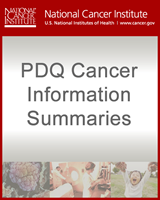| High risk (>90%) | 4-drug combination of NK-1 antagonist, 5-HT3 receptor antagonist, dexamethasone, and olanzapine recommended prechemotherapy | 3-drug combination of NK-1 antagonist, 5-HT3 receptor antagonist, and dexamethasone recommended prechemotherapy | 3-drug combination of NK-1 antagonist, 5-HT3 receptor antagonist, and dexamethasone prechemotherapy |
| Note: Depending on NK-1 antagonist, dosing may be ≥1 day |
| Olanzapine and dexamethasone to be continued on days 2–4 | OR: Olanzapine (5–10 mg), palonosetron (0.25 mg), and dexamethasone (12 mg) prechemotherapy, followed by olanzapine (5–10 mg) daily on days 2–4 |
| For anthracycline and cyclophosphamide combinations only, olanzapine to be continued on days 2–4 | OR: Four-drug combination of NK-1 antagonist, 5-HT3 receptor antagonist, dexamethasone, and olanzapine recommended prechemotherapy |
| Note: Depending on NK-1 antagonist, dosing may be ≥1 day | Olanzapine and dexamethasone to be continued on days 2–4 |
| Note: Depending on NK-1 antagonist, dosing may be ≥1 day |
| Moderate risk (30%–90%) | Carboplatin AUC ≥4 mg/mL per min; 3-drug combination of NK-1 antagonist, 5-HT3 receptor antagonist, and dexamethasone recommended prechemotherapy | For carboplatin-containing regimens, 3-drug combination of NK-1 antagonist, 5-HT3 receptor antagonist, and dexamethasone recommended prechemotherapy | 2-drug combination of 5-HT3 receptor antagonist and dexamethasone followed by dexamethasone (8 mg ) on days 2–3 OR: 5-HT3 receptor antagonist monotherapy on days 2–3 |
| For patients receiving chemotherapies of moderate emetic risk excluding carboplatin AUC ≥4 mg/mL per min, 2-drug combination of 5-HT3 receptor antagonist and dexamethasone recommended prechemotherapy | For patients receiving chemotherapies of moderate emetic risk excluding carboplatin, 2-drug combination of 5-HT3 receptor antagonist and dexamethasone recommended prechemotherapy | OR: Olanzapine (5–10 mg), palonosetron (0.25 mg), and dexamethasone (12 mg) prechemotherapy, followed by olanzapine (5–10 mg daily) on days 2–3 |
| For patients receiving cyclophosphamide, doxorubicin, oxaliplatin, and other moderate-emetic-risk antineoplastic agents known to cause delayed nausea, dexamethasone may be offered on days 2–3 for prevention of delayed emesis | For patients receiving cyclophosphamide, doxorubicin, or oxaliplatin, dexamethasone may be offered on days 2–3 for prevention of delayed emesis | OR: 3-drug combination of NK-1 antagonist, 5-HT3 receptor antagonist, and dexamethasone recommended prechemotherapy, followed by dexamethasone (8 mg ) on days 2–3 |
| Note: depending on NK-1 antagonist, dosing may be ≥1 day |
| Low risk (10%–30%) | Single dose of 5-HT3 receptor antagonist or dexamethasone (8 mg) recommended | Single dose of 5-HT3 receptor antagonist or dexamethasone or dopamine antagonist recommended | Single dose of 5-HT3 receptor antagonist or dexamethasone (8–12 mg) or metoclopramide (10–20 mg) or prochlorperazine (10 mg) recommended |
| Minimal risk (<10%) | No antiemetic administered routinely pre- or postchemotherapy | No routine prophylaxis recommended | No routine prophylaxis recommended |
